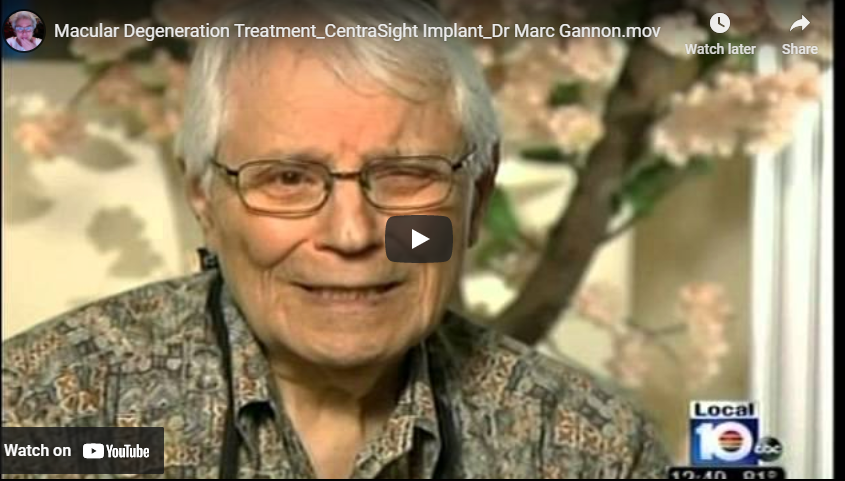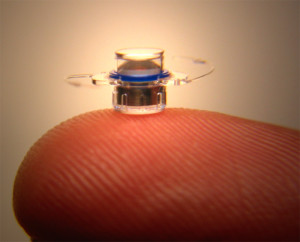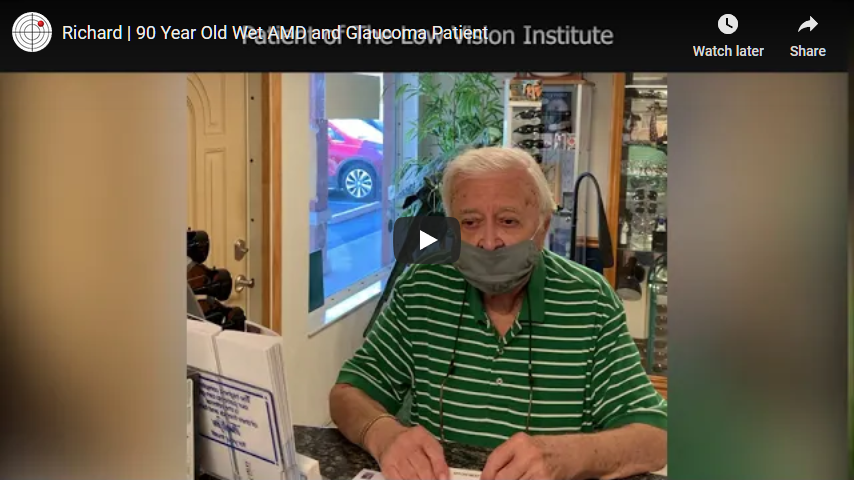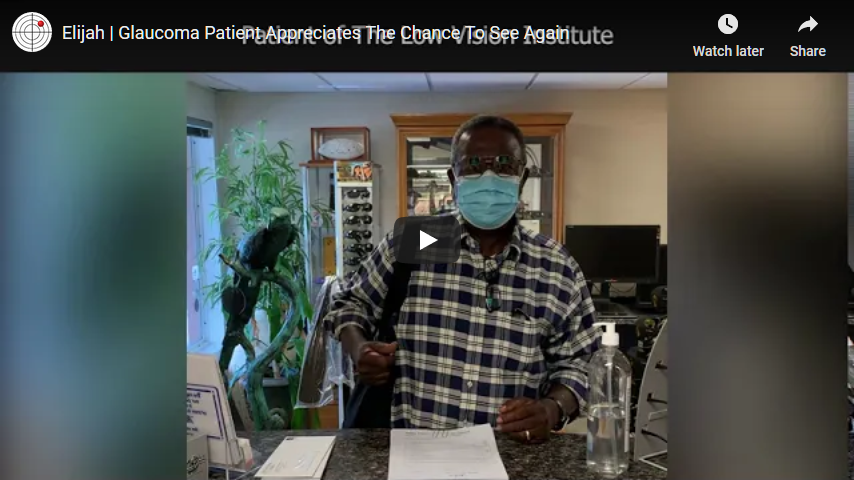CentraSight
AS SEEN ON NBC NIGHTLY NEWS and LOCAL 10
What is CentraSight?
The CentraSight treatment program uses a tiny telescope, an FDA-approved medical device, which is implanted inside the eye to improve vision and quality of life for individuals affected by End-Stage AMD.
The implantable Miniature Telescope, which is about the size of a pea, is intended to improve distance and near vision in people who have lost central vision in both eyes due to End-Stage AMD. The telescope implant is surgically placed inside one eye. The implanted eye provides central vision; the other eye provides peripheral vision.
What is End-Stage AMD?
End-Stage Age-Related Macular Degeneration (AMD) is the most advanced form of AMD. It results in a loss of central vision, or blindspot, uncorrectable by glasses, drugs, or cataract surgery. Patients with End-Stage AMD lose the ability to see and do many routine activities, like being able to recognize the faces and facial expressions of friends and relatives, watch TV, cook, sightsee and read.
There is no cure for End-Stage AMD at this time. But if you have End-Stage AMD, the CentraSight treatment program could help improve your vision and reconnect you to the things in life you love to see and do.
Four-Step Process
The CentraSight treatment program involves a four-step process:
Step 1 – Diagnosis
To be considered as a possible candidate for the treatment, you must first be examined by a retina specialist to confirm whether you have End-Stage AMD. This will involve a thorough medical eye examination and a review of your medical history, including any conditions that may make the procedure difficult for you or increase the likelihood of complications. Your retina specialist will explain the benefits and risks of the CentraSight treatment program and answer any questions you may have.
Step 2 – Candidate Screening
The candidate evaluation includes testing your vision using external telescope simulators. The results of these tests can help give you and your CentraSight Team a good idea of what your vision may be like after the telescope implantation surgery and if the effect of the magnification in one eye will be useful to you. A low vision specialist will also talk to you about how your new vision status may affect your everyday life and how working with the low vision occupational therapist can help you reach your vision goals.
Step 3 – Surgical Procedure
The telescope implantation surgical procedure is performed on only one eye. It involves removing the eye’s natural lens and replacing it with a tiny telescope implant. This part of the treatment process is done in a relatively short outpatient surgery by a specially trained opthalmologist who performs cornea and cataract surgeries (cornea/cataract surgeon). You won’t have to stay in a hospital and will return home the same day.
Step 4 – Learning to Use Your New Vision
After you have recovered from surgery, the experts at the Low Vision Vision Institute will work with you to prescribe eyeglasses and complete your rehabilitation to help you adapt to and learn how to use your new vision (and way of seeing) in daily life. They will work with you on an individualized plan over several weeks to reach your personal goals.
For more information on CentraSight, click here.






